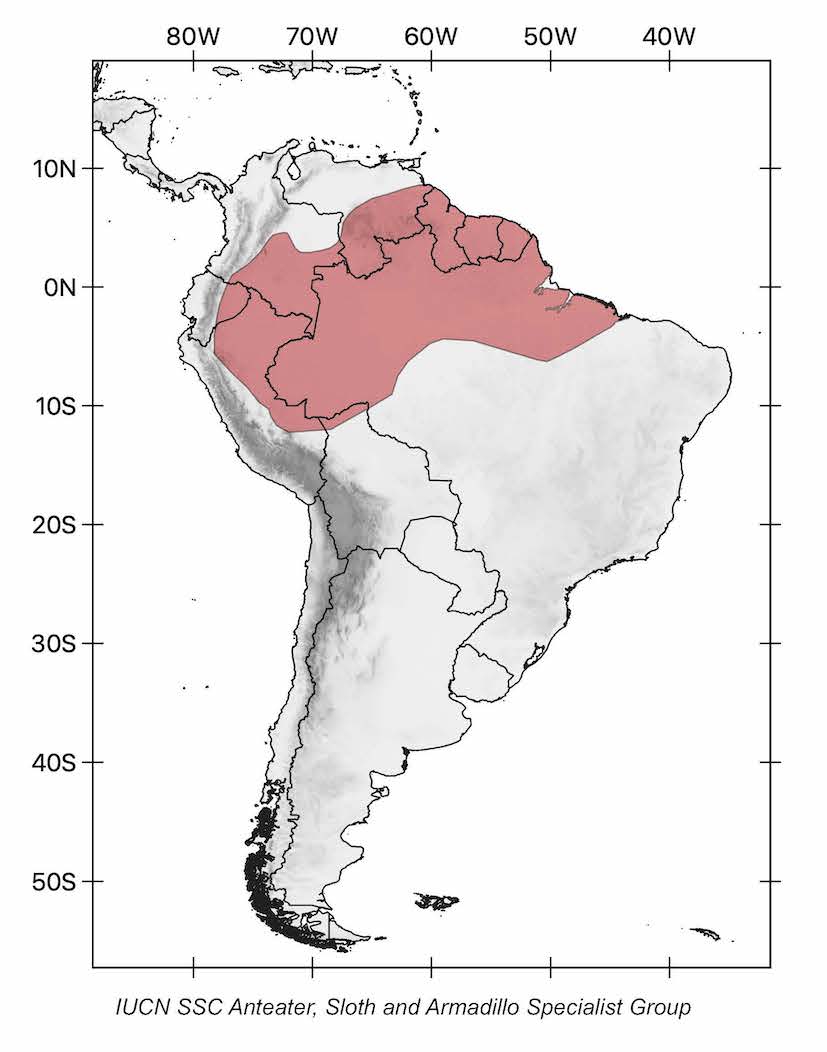Southern two-toed sloth
(Choloepus didactylus)
other common names
Southern two-fingered sloth
Linné’s two-toed sloth
Unau
Taxonomy
Order: Pilosa
Family: Megalonychidae


description
With a head-body length of 54–88 cm and a short tail, of 1–3.3 cm, this is the largest extant sloth species. It weighs between 4 and 11 kg. It has long fore- and hindlimbs that are almost equal in length. The forelegs have two large curved claws. Although their fur is tan to buffy brown, wild individuals may appear pale green due to the algae that grow on their hair. In contrast to Choloepus hoffmanni, the hair on the throat and chest of C. didactylus are similar in color (in C. hoffmanni, the throat hairs are lighter). The face is light brown, lacks fur, and has a leathery texture.

diet
The diet of wild two-toed sloths is poorly known. They seem to be herbivores and generalists, which means that they feed on plant matter, but may also opportunistically eat animal matter in the form of insects, eggs, nestlings, and small vertebrates. A rather unusual observation in the Amazon of north-eastern Peru recorded an adult individual descending to the forest floor to feed on a human latrine.

reproduction
Females start breeding at 3, and males at 4.5 years of age. There is no fixed breeding period; births have been documented throughout all seasons of the year. Gestation length seems to be approximately 10 months but estimates are quite variable. A single offspring is born per litter, which is weaned at 3–5 months of age. Females carry their young on their belly or their back.

HaBITAT and ECOLOGy
Choloepus didactylus is found in tropical moist lowland and montane forest. It has nocturnal and solitary habits and spends most of the time in the forest canopy, where it feeds, rests, sleeps, and breeds. It descends to the ground to defecate every 3 to 5 days.

Population trend
Decreasing.

threats
The species is affected by habitat loss due to deforestation for large-scale agriculture, logging, exploration for mining and other activities, and urban sprawl. It is also affected by wildfires, which can kill the animals or affect them indirectly through habitat loss. The species is illegally sold as a pet species in several parts of its range, but the impact of this activity is difficult to quantify.
Because they are usually found high in the canopy, motionless and virtually invisible, southern two-toed sloths are not as commonly hunted as armadillos or anteaters, and there are taboos against their consumption by some native groups. They are probably hunted opportunistically, but there is no serious bushmeat trade.

range
The southern two-toed sloth ranges through Venezuela (the delta and south of the Río Orinoco) and the Guianas (French Guiana, Guyana, and Suriname) south into Brazil (Maranhão state west along the Rio Amazonas/Solimões) and west into the upper Amazon Basin of Ecuador and Peru. Its southern limit in the western Amazon of Brazil is unclear. It occurs in the southern departments of Colombia, with its northern limit being the departments of Meta and Guainía.

conservation status
Choloepus didactylus is listed as Least Concern in view of its wide distribution, presumed large population, and its occurrence in a number of protected areas. The species is affected by several threats, especially habitat loss due to wildfires and land use change. However, it is unlikely to be declining fast enough to qualify for listing in a threatened category.

curious facts
Although commonly called two-toed sloths, Choloepus actually have three toes, but two fingers. Hence, they should be called two-fingered sloths. Because sloths spend most of the time hanging upside down, their fur is parted in the middle of their abdomen.